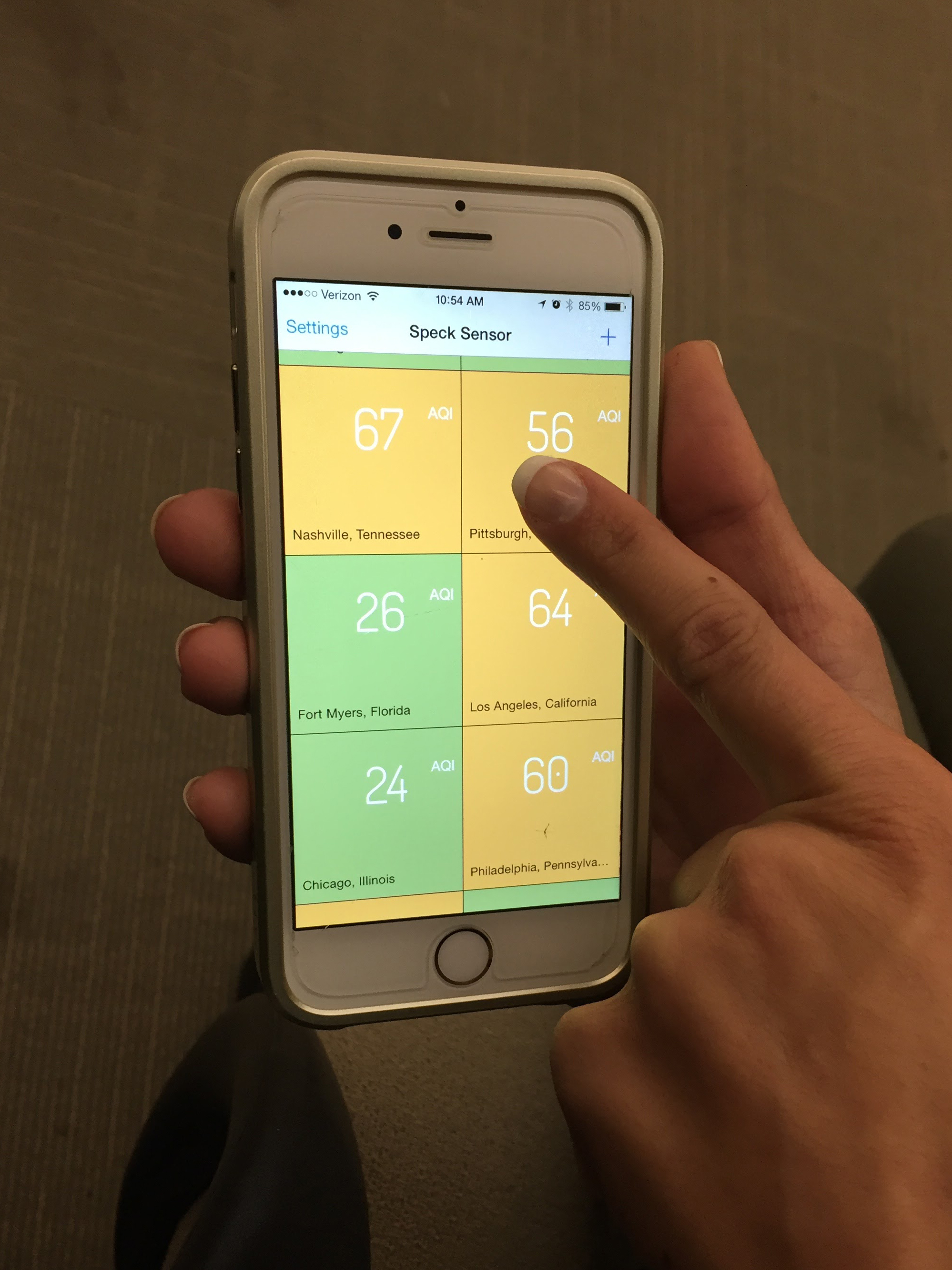SpeckSensor App Compares Air Quality Locally and Nationally Users Can Track Pollution Wherever They Choose
Byron SpiceMonday, November 2, 2015Print this page.

A new smartphone app called SpeckSensor allows users to get up-to-date Air Quality Index (AQI) numbers for their current location and for other locales of their choosing, enabling them to quickly see if the air they are breathing is healthy and how it compares to other sites.
The app, developed by the CREATE Lab at Carnegie Mellon University's Robotics Institute and Airviz, a lab spinoff that produces a low-cost particulate air quality monitor called Speck, automatically loads the latest AQI from the federal air quality monitor nearest to the user's location. The user can specify additional locations, either by name or ZIP code, to monitor or use as a basis of comparison. It can also link to online Speck monitors.
"We wanted people to be able to pick the hot spots of their choosing," said Illah Nourbakhsh, professor of robotics, who noted that the selectivity allows users to track locales of personal or professional interest, and makes national air quality statistics more comprehensible. "Otherwise," he added, "it's like drinking from a fire hydrant."
Beatrice Dias, project director in the CREATE Lab, said users have begun sharing screenshots of the app with friends and acquaintances, extending the informational reach of the app beyond direct users.
For residents of cities such as Pittsburgh, where air quality is often subpar, being aware not only of local conditions, but of how local air quality compares with other communities is important, said Philip R.S. Johnson, director for science and environment at The Heinz Endowments.
"The default in Pittsburgh is to talk about how much better the air is now than 30 years ago," Johnson said. "And Pittsburgh has made incredible progress. But most cities that take this seriously talk about how their air compares with health standards. Most cities understand that if you're going to be competitive, you have to have a healthy environment."
Pittsburgh ranks among the worst 13 percent of U.S. cities for particulate air pollution and the worst 2 percent for toxic air pollution, Johnson noted.
Dias said researchers plan to add more features to the SpeckSensor app, such as the ability to track air monitoring records for the past year. An Android version of the SpeckSensor app can be downloaded at Google Play and an iOS version is available through the iTunes Store.
The SpeckSensor app is supported by The Heinz Endowments as part of its Breathe Project, a coalition of residents, businesses and other groups that work together to improve air quality in Southwestern Pennsylvania. It also supports Breathe Cam, a system of cameras built by the CREATE Lab to monitor Pittsburgh skies and help trace visual pollution back to its sources.
Byron Spice | 412-268-9068 | bspice@cs.cmu.edu
